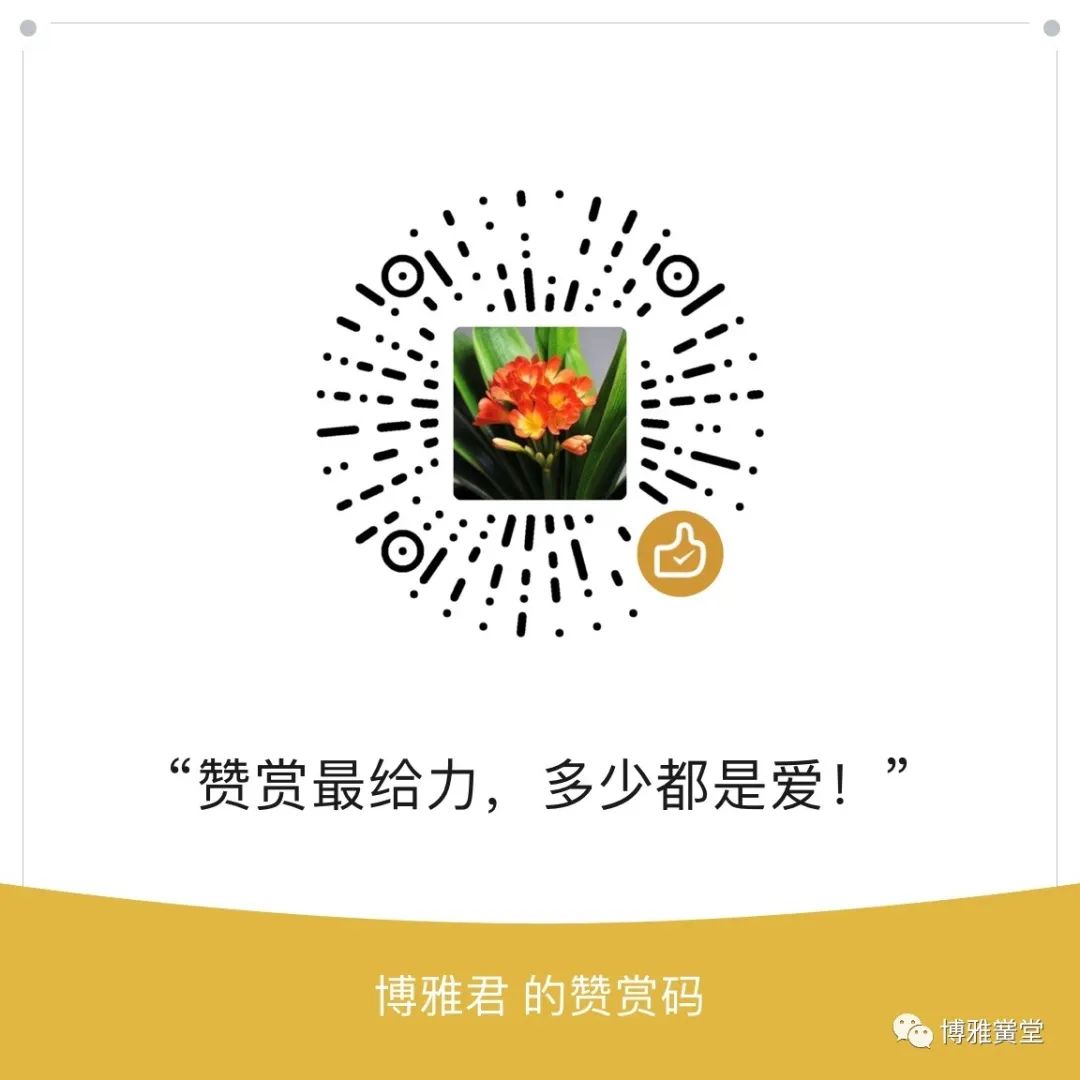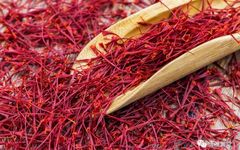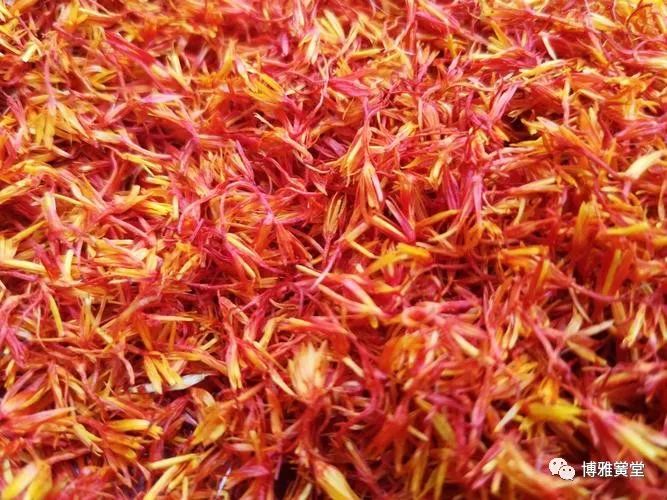
Honghua (Safflower) is a gynecological herb that promotes blood circulation and resolves stasis.
There are two types of Honghua in traditional Chinese medicine: one is Cao Honghua (Carthamus tinctorius), and the other is Cang Honghua (Crocus sativus). Cao Honghua was originally called Honglanhua (Red and Blue Flower), referred to as Huanglan (Yellow and Blue) in the Bozhi Zhi (Records of Herbs), and Honglan in the Gujin Zhu (Ancient and Modern Annotations). It is not recorded in the Shennong Bencao Jing (Shennong’s Classic of Materia Medica). Named for its red and blue colors, it is also known as Ci Honghua (Thorny Safflower), which is the tubular flower crown of the annual herbaceous plant in the Asteraceae family. In Jiangnan, it is referred to as Du Honghua (Dyeing Safflower). The stem grows upright, reaching a height of 45 to 150 cm, with a woody lower part and branching upper part. The leaves are lanceolate, serrated at the edges, and alternate with almost no petiole. It blooms in summer, producing large, orange-red, terminal flower heads. The seeds are oval and four-angled. Originally from Egypt, India, and European countries, it has a history of over 2000 years in China. The seeds can be pressed for oil, and the flowers can be used as dye or medicine. The fruit is called Bai Pingzi (White Flat Seed), with effects similar to the flowers. Xinjiang’s Tianshan region is the main production area, known for its high quality, and is one of the four precious medicinal materials of Xinjiang.
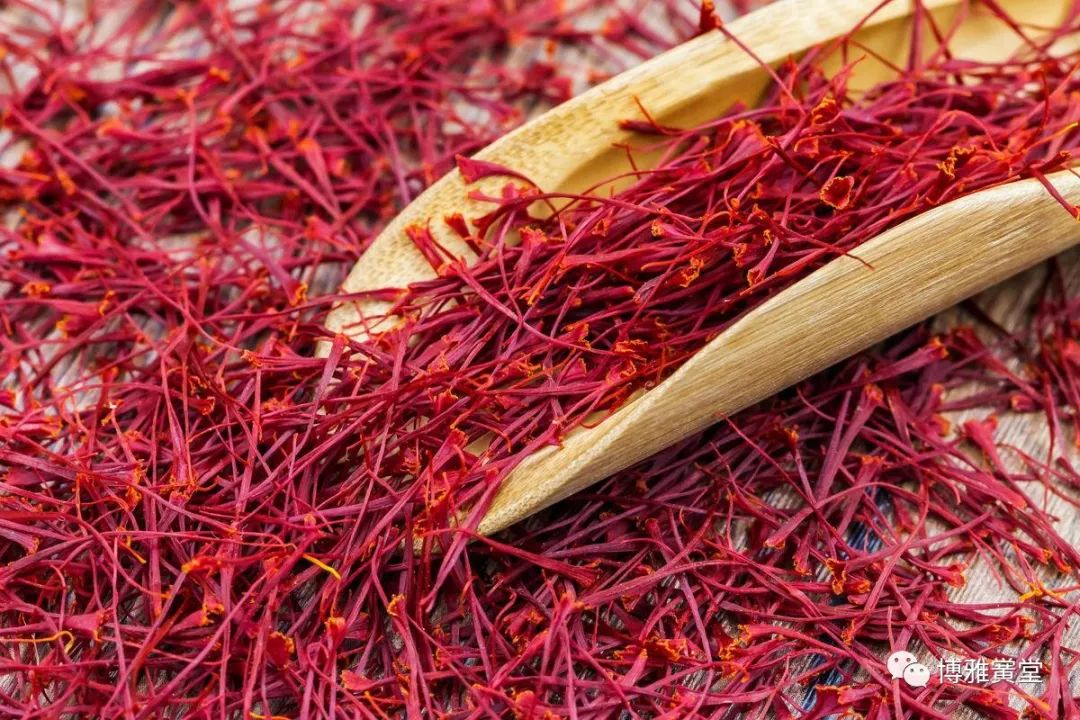
Cang Honghua (Saffron), also known as Fan Honghua (Foreign Safflower) or Xihonghua (Western Safflower), is native to Europe and Central Asia. It is said that Zhang Qian brought it back from the West, hence it is also called Bo Fu Lan, Sa Fa Ji, and Sa Fu Lan (all transliterations). Li Shizhen stated: “Saffron comes from the Western regions and the land of the Tianfang, which is the red and blue flower of that place. In the Yuan dynasty, it was used in food.” Cang Honghua belongs to the Iridaceae family, a perennial herb with no above-ground stem, its bulb resembling that of a daffodil. The leaves are thin like threads, similar to leeks. The flowers are terminal, with six petals. The medicinal parts are the upper part of the style and stigma, which are low in yield but precious. It is now cultivated in places like Beijing, Jiangsu, and Zhejiang.
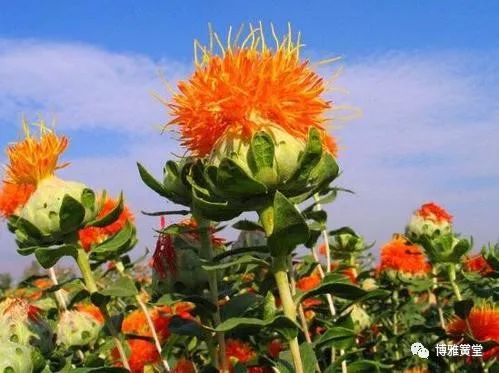
Cao Honghua and Cang Honghua have similar effects, but Cang Honghua is much more potent than Cao Honghua. Honghua has the effect of invigorating blood circulation and resolving stasis. In the Song dynasty, Gu Wenjian’s Chuan Chuang Ye Hua (Night Talks by the Boat Window) and Qiu Yuan’s Bai Shi (Miscellaneous Histories) recorded a remarkable event: a famous physician from Fenghua, Zhejiang, named Lu Yan, was highly skilled. A woman surnamed Xu from Xinchang experienced fainting after childbirth and traveled over 200 miles to seek Lu Yan. Upon arrival, Lu found the woman unconscious, with only her chest still warm. Lu said: “Quickly buy several tens of jin of Honghua; it can save her life.” After purchasing the Honghua, he boiled it in a large pot, and when the decoction boiled, he placed the woman over a bucket filled with the medicinal liquid to steam her with the medicinal vapor, adding more decoction as it cooled. Soon, the woman’s hands moved slightly, and after half a day, she regained consciousness.
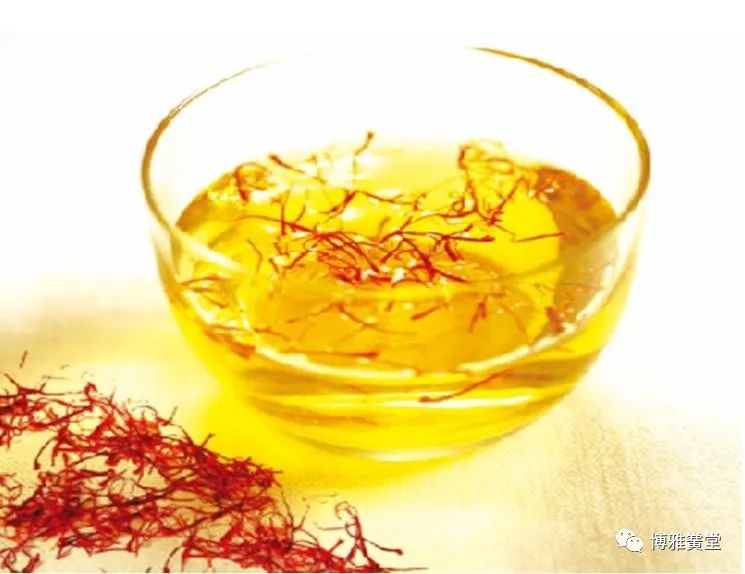
Honghua has the effects of stimulating the heart, lowering blood pressure and cholesterol, promoting the contraction of bronchial smooth muscle, and enhancing uterine contractions. The dosage is typically 3 to 9 grams; excessive amounts can lead to uncontrolled bleeding. Honghua is a gynecological blood medicine, as stated by Zhang Zhongjing in the Jin Kui Yao Lue (Essential Prescriptions of the Golden Cabinet): “For women suffering from sixty-two types of wind and abdominal blood stasis pain, Honglanhua wine is the remedy.”
Honghua has a pungent flavor, a warm nature, and enters the Heart Meridian and Liver Meridian. It invigorates blood circulation, regulates menstruation, resolves stasis, and alleviates pain. It is used to treat amenorrhea, difficult labor, stillbirth, postpartum lochia retention, pain from blood stasis, trauma, abdominal masses, and ulcerative swellings. Below are some recommended health-preserving formulas:
(1) Honghua 9 grams, Yimucao (Motherwort) 15 grams, Wei Jiang (Ginger) 6 grams. Decoction with water and add brown sugar to adjust. Used for treating postpartum lochia retention, stasis obstructing dysmenorrhea, and abdominal pain from postpartum blood stasis.
(2) Honghua 10 grams, Bai Jiu (White Wine) 100 milliliters. Soak for 1 week, filter the liquid, and dilute with an equal amount of distilled water. Use a cotton ball soaked in the solution for external application. Used for treating external trauma and swelling.
(3) Honghua 500 grams with 700 milliliters of water, decoct for 2 hours and filter the liquid. Continue to decoct until it becomes gelatinous, then apply with gauze to the affected area, securing it. Change the dressing once every 2 days. Used for treating bedsores.
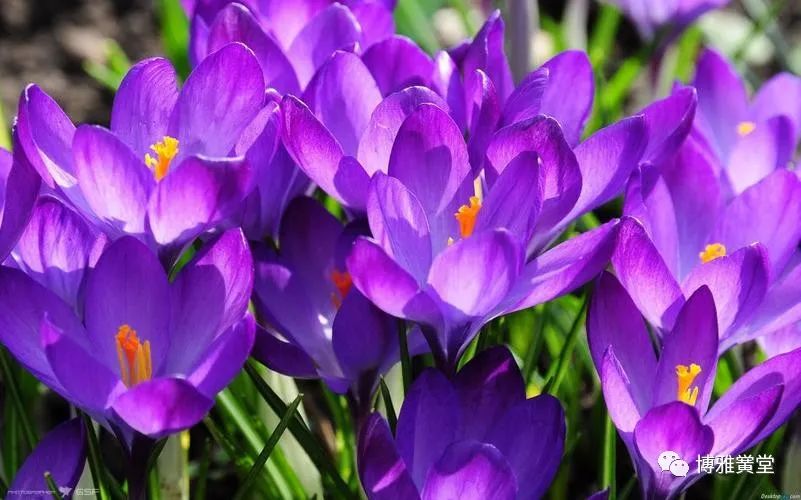
(4) Honghua 40 grams, Diguopi (Lycium Bark) 40 grams. Grind into a fine powder, mix with 100 grams of glycerin. When using, wash feet with warm water and vinegar, dry, and apply the medicine to the soles, wrapping with gauze. Twice daily, healing in 1 week. Used for treating calluses (commonly known as corns).
(5) Honghua Oil combined with Vitamin E to make heart and brain health capsules can prevent arteriosclerosis, coronary heart disease, angina pectoris, hyperlipidemia, and hypertension.
(6) Honghua 15 grams, Yujin (Curcuma) 18 grams, Danshen (Salvia miltiorrhiza) 18 grams, Gualou (Trichosanthes) 30 grams. Decoct to a concentrated liquid, then dry to make 30 tablets, taken 3 times daily. A course of treatment lasts 4 weeks. Used for treating coronary heart disease.
(7) Honghua 9 grams, Yejuhua (Wild Chrysanthemum) 12 grams, Jinyinhua (Honeysuckle) 12 grams, Gancao (Licorice) 12 grams. Grind into a fine powder and brew with boiling water. Used for treating chronic hepatitis.
(8) Honghua 9 grams, Danggui (Angelica) 20 grams, Bai Jiu (White Wine) 100 milliliters. Soak for 48 hours and filter. Take 3 times daily, 3 milliliters each time. Used for treating blood stasis.
When using Honghua, it is important to note that it is a blood-moving and blood-breaking herb; a small amount promotes circulation, while a large amount can cause bleeding. The dosage should be carefully weighed, considering the depth of stasis in the condition. The common dosage is 5 to 15 grams, and it should not be applied externally to broken skin. Pregnant women should avoid using it.

Honghua
Red in color, belonging to fire, entering the Heart Meridian,
It is the gynecological blood medicine that cannot be separated from her.
In small amounts, it promotes circulation; in large amounts, it breaks blood.
Diagnosis of the condition requires insight.
20220430
